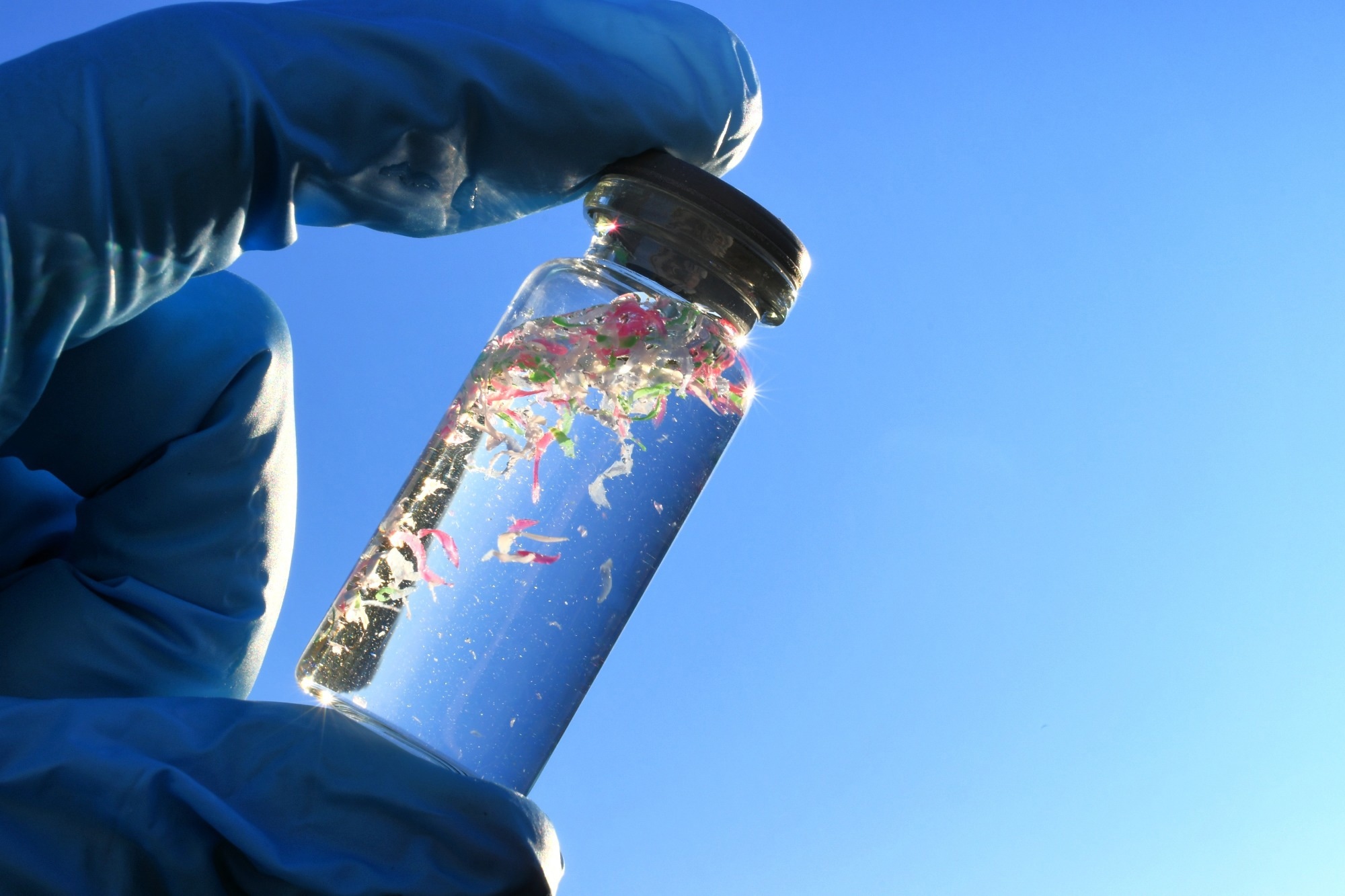A study published in Scientific Reports sheds light on microplastic (MP) pollution across both land and water ecosystems, highlighting its rising importance in environmental management and sustainable development.

Image Credit: MargJohnsonVA/Shutterstock.com
Background
Microplastics, plastic particles less than 5 millimeters in size, are now widespread in the environment. They originate from the breakdown of larger plastic waste and the direct release of small plastic particles from everyday consumer products. Once in the environment, they travel easily, accumulating in soil and water and threatening biodiversity, soil fertility, and water quality.
Insects are key to this issue, acting as biological carriers that link terrestrial and aquatic ecosystems. Through physical contact and ingestion, they help spread microplastics, complicating containment efforts. Soil near waste disposal areas is particularly vulnerable, where MP pollution disrupts microbial activity and compromises soil health, with direct implications for sustainable agriculture. Microplastics in water sources further threaten food and water security.
Given the widespread impact, the study emphasizes the need for environmental monitoring and creative mitigation strategies—especially those aligned with cleantech goals aimed at developing sustainable, eco-friendly technologies and practices.
The Current Study
Researchers conducted a systematic sampling effort to evaluate microplastic contamination across diverse land-use types in southern India.
For soil analysis, surface litter was first removed, followed by the extraction of around 500 grams of soil from the top 15 centimeters at each site using a steel spade.
The V-shaped digging profile ensured consistent sampling depth. Subsamples were then combined and reduced to a 1-kilogram sample for laboratory analysis. Larger debris over 2 millimeters was sieved out, and the remaining soil was dried and finely ground to facilitate microscopic and spectral analysis.
Water samples were collected from each site, including borewells, open wells, and municipal tap water. Insects—primarily beetles and pollinators—were captured using sweep nets and manual methods. After collection, they were preserved at low temperatures to prevent degradation.
Each insect was rinsed with ultrapure distilled water to identify external microplastic contamination. The wash water was filtered and analyzed using Fourier-transform infrared (FTIR) spectroscopy to detect adhered microplastic particles.
The FTIR process involved drying a small amount of wash solution and placing insect residue or soil onto a zinc selenide plate for spectral scanning in the 4000 to 600 cm⁻¹ range. Distinct polymer types were identified using spectral library comparisons. Soil samples were prepared as potassium bromide (KBr) pellets to reveal polymer-specific absorption patterns. Researchers measured soil properties, such as bulk density, porosity, pH, electrical conductivity, organic carbon, and nutrient content, to explore the broader effects of microplastics on soil health and fertility.
Results and Discussion
The findings confirmed widespread microplastic contamination across all studied environments. In water and insect samples, polypropylene and polystyrene comprised over 91% of identified microplastics, with polyethylene and polyester also present. In soil, polyethylene was dominant, particularly in areas close to waste disposal sites, highlighting the link between plastic waste degradation and soil pollution.
Insects from residential and garbage zones showed high levels of microplastic adherence, either through ingestion or contact with contaminated surfaces, confirming their role in dispersing plastic particles across ecosystems. Microplastic concentrations were highest near pollution hotspots, particularly garbage sites.
MP contamination in irrigation water raised concerns about potential entry into the food chain, as crops exposed to polluted water could absorb microplastic residues. The study also found that microplastics tend to bind with organic matter, affecting their breakdown and increasing their persistence in the environment.
Conclusion
This study reveals the extensive spread of microplastics across soil, water, and insect populations in southern India, and it highlights the underrecognized role of insects in carrying these particles across ecosystems and potentially into food systems.
MPs in irrigation water pose risks to agricultural sustainability and food safety, reinforcing the urgency for effective pollution control measures. The research supports the need for comprehensive strategies that combine waste management reforms, plastic degradation technologies, and sustainable land-use practices.
By focusing on reducing plastic waste and enhancing remediation efforts, the findings contribute to the broader development of green technologies essential for healthier ecosystems.
The authors call for further investigation into microplastic behavior in different environmental contexts and stress the importance of innovation in cleantech solutions aimed at environmental cleanup and restoration.
Source:
Rathikannu S., Gautam S., et al. (2025). FTIR based assessment of microplastic contamination in soil water and insect ecosystems reveals environmental and ecological risks. Scientific Reports 15, 28615. DOI: 10.1038/s41598-025-14507-w, https://www.nature.com/articles/s41598-025-14507-w